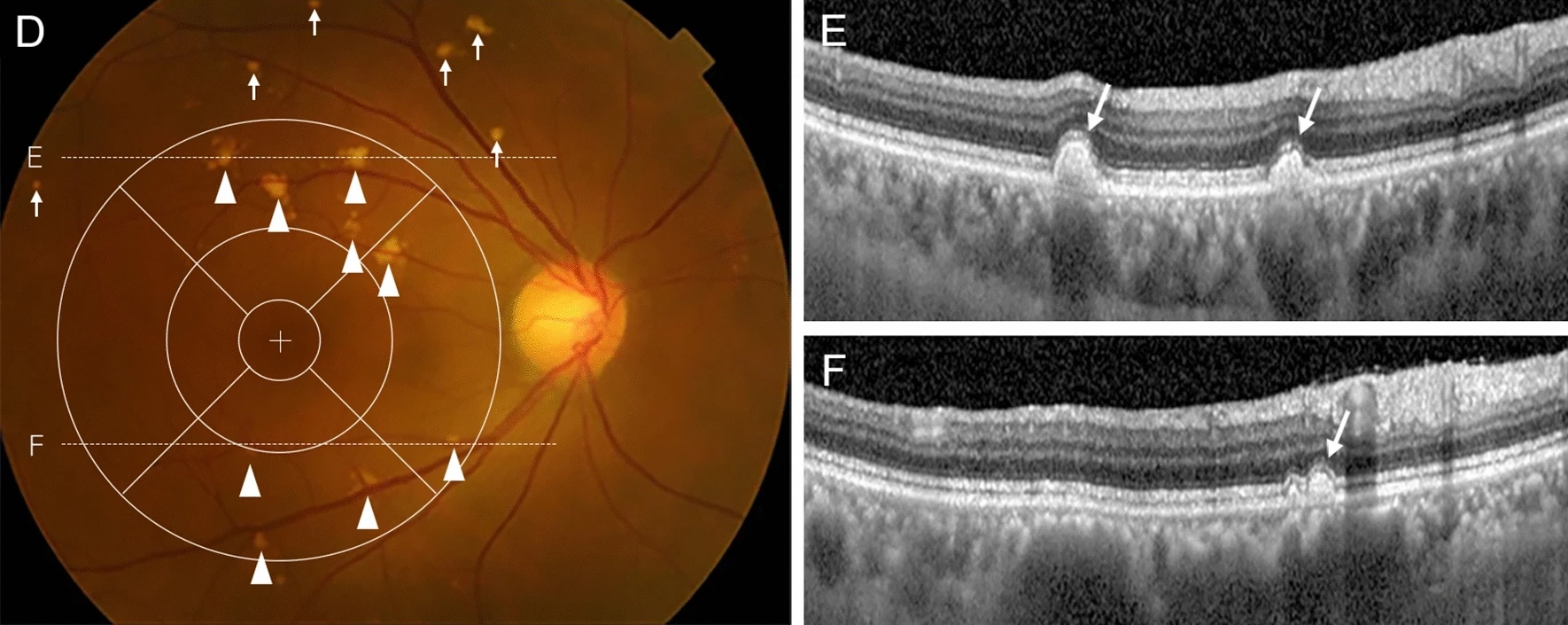A new study explored associations between the risk of progression to advanced AMD the type of drusen present, if any. Of particular interest was a recently identified type called pachydrusen, which have well-defined margins with an irregular outer contour and which occur in isolation or in groups of a few at the posterior pole, the researchers explained in their paper for Scientific Reports.
Many aspects of pachydrusen, including the long-term prognosis and risk factors for progression to advanced AMD remain unclear, due to a lack of a longitudinal study. Researchers in South Korea investigated the occurrence of advanced AMD and risk factors for progression to advanced AMD in eyes with pachydrusen. They found that age and macular pigmentary changes were risk factors for the progression to wet AMD in eyes with pachydrusen. However, the number of macular pachydrusen and the presence of MNV in the fellow eye did not show a statistically significant relationship with MNV development.
 |
|
Eyes with pachydrusen had a risk profile for progression to advanced AMD that differed from that of AMD eyes without pachydrusen. In these images from the study, the fundus photo (D) shows pachydrusen in the macula (arrowheads) and extramacular areas (arrows) but no MNV or GA present, while two SD-OCT scans show corresponding sub-RPE deposits in scans done at the dashed white lines labeled E and F. Photo: Nam SW, et al. Sci Rep. 2024;14(1):6132. Click image to enlarge. |
This retrospective longitudinal study included 248 eyes of 156 patients with pachydrusen without advanced AMD at baseline. The mean age at baseline was 65.4 years, and the mean follow-up duration was 6.40 years.
The mean total number of pachydrusen and macular pachydrusen were 4.10 and 2.27 per eye, respectively. Pachydrusen was accompanied by other types of drusen in 4.8% of eyes at baseline. During follow-up, MNVs occurred in 2.8% (seven eyes), which included polypoidal choroidal vasculopathy (PCV) in six eyes; however, no geographic atrophy (GA) occurred.
The cumulative incidence curves differed significantly based on the presence of macular pigmentary changes. In eyes with pachydrusen, the 10-year cumulative incidence of MNV was significantly higher when macular pigmentary changes were present than when they were absent (17.39% vs. 0.57%). In the analysis of MNV development according to the age at baseline, those aged older than 67 years showed a higher frequency of MNV development than did those aged 67 years or younger, although they had a short period of follow-up.
“If pachydrusen eyes have a risk profile for progression to advanced AMD that is different from that of AMD eyes with drusen other than pachydrusen, the current advanced AMD risk prediction methods may not work in eyes with pachydrusen,” the researchers wrote in their paper.
“We believe that the current AMD classification should be updated to distinguish drusen types if pachydrusen has a different risk profile from that of other drusen,” they concluded. “Further studies with larger sample sizes should be performed to confirm the results of this study.”
Nam SW, Noh H, Yoon JM, Ham DI. Advanced age-related macular degeneration and risk factors in eyes with pachydrusen. Sci Rep. 2024;14(1):6132. |


